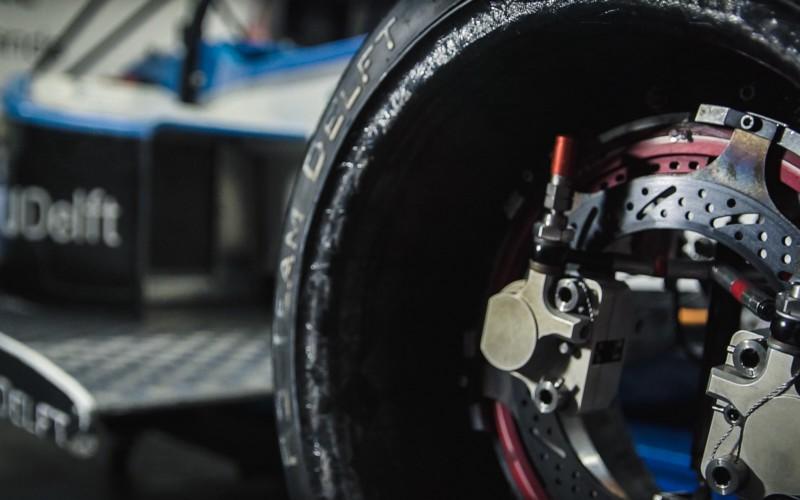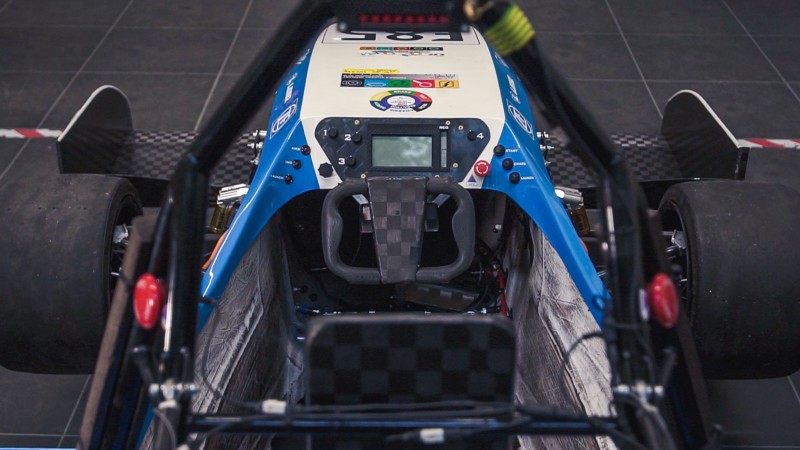TU Delft Formula Student Team Races to Success with Help from 3D Hubs’ Student Program
 The TU Delft Formula Student Team is one of the most successful teams in the history of the Formula SAE Student engineering competition, an annual multi-race event that challenges university students around the world to design, build and race a small Formula-style racecar. Unsurprisingly, 3D design, scanning and printing has come into play for many of the student teams in the recent years of the program, and we’ve covered several of these teams recently as they leverage the technology to create their machines.
The TU Delft Formula Student Team is one of the most successful teams in the history of the Formula SAE Student engineering competition, an annual multi-race event that challenges university students around the world to design, build and race a small Formula-style racecar. Unsurprisingly, 3D design, scanning and printing has come into play for many of the student teams in the recent years of the program, and we’ve covered several of these teams recently as they leverage the technology to create their machines.
The TU Delft team is no exception, and the technology has certainly been working for them – the team took home a championship in both 2014 and 2015. According to Jonas Holtermann, the team’s chief engineer (who also operates his own 3D Hub), 3D printing has played a big role in their success. Each Formula Student team has only nine months to design, build, test and perfect a car before the race, so the students need to work fast and be able to adapt to challenges that arise. 3D printing is good for both.
One challenge that arose for the TU Delft team was the steering wheel. Each team’s car will be driven by multiple drivers at various points, with each driver having different driving styles and preferences, including varying preferences on the most comfortable way to grip the steering wheel. To create a steering wheel that was comfortable – and thus more effective – for every driver, the team had to design and test multiple iterations – something that could have significantly slowed them down, and cost them a lot of money, if they had been using CNC machining.
With 3D printing, however, money and time weren’t issues. The team designed the steering wheel by cobbling together a rough prototype from laser-cut wood and clay. Driving gloves were pressed into the clay to create the rough outline of a grip, and the whole thing was scanned into 3D modeling software. The designers then began tweaking the design and printing out prototypes for the drivers to test.
“The steering wheel is in a narrow space and needs to be able to deal with lots of force, drivers need to be able to really dig into the shape and apply force around corners,” said Holtermann. “It being strong and having a good grip instills confidence in the drivers.”
 The three drivers who tested the 3D printed prototypes all turned out to have very different preferences in terms of grip – one preferred to grasp the wheel from above, one from below, and one with a standard grip. In order to keep all of their drivers comfortable, the designers ended up creating a final steering wheel with grips all the way around it. The final part was then 3D printed as well, in colorFabb XT CF20, chosen for its stiffness, accuracy and stability.
The three drivers who tested the 3D printed prototypes all turned out to have very different preferences in terms of grip – one preferred to grasp the wheel from above, one from below, and one with a standard grip. In order to keep all of their drivers comfortable, the designers ended up creating a final steering wheel with grips all the way around it. The final part was then 3D printed as well, in colorFabb XT CF20, chosen for its stiffness, accuracy and stability.
The steering wheel wasn’t the only part of the car that was 3D printed. For an interior bracket that connects the steering rod of the inner wheel to the front of the vehicle, the team used direct metal laser sintering (DMLS) to print the part in strong titanium.
“The reason we used titanium 3D printing for the part was that it simply couldn’t be made in any other way, we needed very specific geometries for the loads that were being applied,” explained Holtermann.
 The part would be subjected to heavy vibration and compression forces while in use, so it needed a complex design to ensure strength and stability. Without 3D printing, the component would have required a large and complicated assembly of parts; with the design freedom allowed by 3D printing, it was able to be created in one, lightweight yet strong piece.
The part would be subjected to heavy vibration and compression forces while in use, so it needed a complex design to ensure strength and stability. Without 3D printing, the component would have required a large and complicated assembly of parts; with the design freedom allowed by 3D printing, it was able to be created in one, lightweight yet strong piece.
In the races that TU Delft has participated in so far this year, the car has held up and performed wonderfully. The students were able to 3D print the parts they needed quickly and inexpensively through their local 3D Hub, with an extra discount that 3D Hubs began offering for students. The 3D Hubs Student Program gives students 25% off all prints at hubs near their campuses.
When 3D Hubs began offering the program on a trial basis last year, they only offered discounts on PLA and ABS prints in a select number of countries. With the success of the program, they’ve expanded it to include a much greater selection of materials, including SLS Nylon, Full Color Sandstone, resin, and even metal. The program is now being offered in 100 countries, with 1,500 local printing services participating.
Education has been a major priority for 3D Hubs lately, as communications manager George Fisher-Wilson told 3DPrint.com at formnext last week. Earlier this year, the organization received a windfall of $7 million in Series B financing, and they’ve been putting it to good use. A lot of new hiring and expansion has been happening lately, Fisher-Wilson told us, and much of those resources have been going toward education and accessibility for students.
“Students are a big percentage of our base,” Fisher-Wilson told us.
Education isn’t the only focus, though. Mid-sized industrial companies are coming to the platform, and even a few big names – according to Fisher-Wilson, the producers of Planet Earth recently used a hub to 3D print camera boxes. Things are going well for 3D Hubs, and they’re working hard to keep it that way, verifying each of their hubs to make sure they’re keeping the best service providers on the platform and building a knowledge base to help potential consumers see 3D printing as something that goes beyond the stereotypical “maker-y” image. Check out the video below to see more from the TU Delft team and how their local 3D Hub has benefited them:
Discuss in the TU Delft forum at 3DPB.com.
Subscribe to Our Email Newsletter
Stay up-to-date on all the latest news from the 3D printing industry and receive information and offers from third party vendors.
Print Services
You May Also Like
3D Printing Financials: Prodways Ends 2024 with a Profit
After a tough couple of years, Prodways (EPA: PWG) is starting to bounce back. The French 3D printing company finally made a profit in 2024, improved its operating performance, and...
Blue Origin & Auburn University Use EOS M290 to Study Copper 3D Printing
Blue Origin, the commercial space company built off of investments from Amazon founder Jeff Bezos, has donated two EOS M290 powder bed fusion (PBF) printers to Auburn University’s National Center...
Rocket Lab to Acquire Restructured Laser Communications Provider Mynaric AG
Rocket Lab USA, the Long Beach-based, end-to-end space services company that specializes in producing rockets with additive manufacturing (AM), has announced plans to acquire Mynaric AG, a German provider laser...
3D Printing Financials: Stratasys Ends 2024 with Cost Cuts and Growth Plans
Stratasys (Nasdaq: SSYS) has wrapped up 2024 with stronger margins but a full-year net loss. The polymer 3D printing leader navigated a year of economic headwinds, restructuring efforts, and shifting...





























